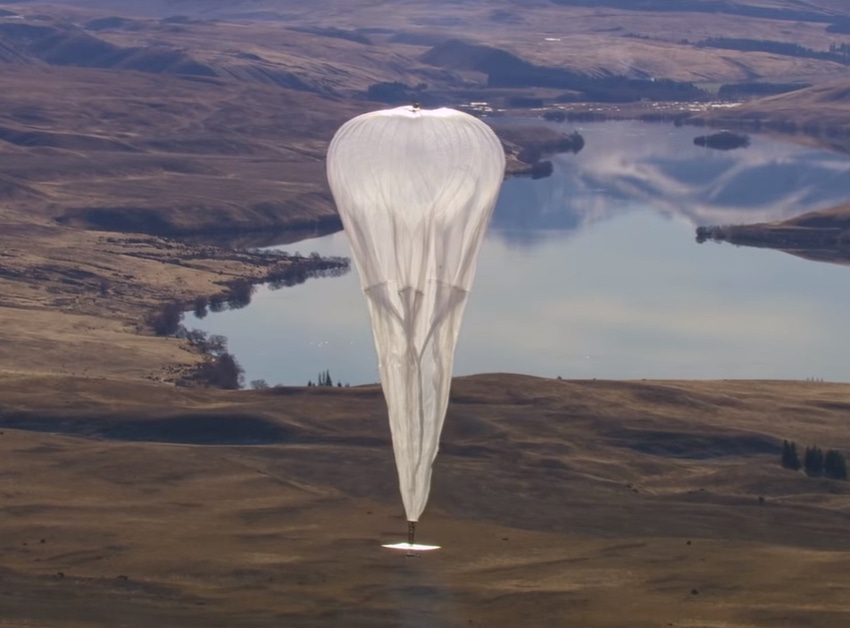Google-owned balloon connectivity firm Loon has officially signed its second customer, Internet para Todos Perú, to deliver the internet to remote regions in the Peruvian Amazon.
November 21, 2019

Google-owned balloon connectivity firm Loon has officially signed its second customer, Internet para Todos Perú, to deliver the internet to remote regions in the Peruvian Amazon.
The agreement between Loon and Internet para Todos Perú will kick-off in 2020, providing connectivity to 200,000 people in the Peruvian Amazon. This is the second commercial agreement signed by Loon, and the first sustained, non-emergency use of the technology in South America.
Owned by Telefónica, Facebook, IDB Invest and CAF, Internet para Todos Perú is an open access wholesale rural mobile infrastructure operator, aiming to deliver the internet to regions which are considered commercially unattractive. Although Internet para Todos Perú is telco neutral, this agreement with Loon will be to deliver connectivity to Telefonica’s customers in the first instance.
“Internet para Todos was born with the purpose of connecting millions of Latin Americans, including 6 million Peruvians without adequate access to mobile internet,” said Teresa Gomes, CEO of Internet para Todos Perú.
“This challenge involves reaching difficult access areas with innovative and sustainable technologies that allow us to overcome geographical, technological and economic complexities.”
For those not familiar with Loon, the business is a graduate of Google’s Moonshot Labs. A seemingly ridiculous idea to use hot air balloons to float radio technology above the worlds’ most difficult to reach regions. These are the areas where laying traditional connectivity infrastructure is not a viable option, ROI would be far too low, so the absurd ideas are considered.
The balloons, floating 20km above sea level, will house 4G radio equipment. Signals from ground infrastructure will be distributed between the network of floating cell sites before relaying to 4G devices on the ground.
Discussions with Telefonica have been on-going for months, though Loon seemingly proved its worth by answering calls from the Peruvian Government and Telefonica following a magnitude 8.0 earthquake in May. The team had already been in the process of laying infrastructure in the region, and it took less than 48 hours for the balloons to arrive and start delivering 4G to users below.
While permanent contracts with telcos will of course be more lucrative to the Loon business, assistance in disaster situations is another element. In various regions throughout the world, the Loon team will be laying infrastructure for the worst-case scenario, though it does give the team a head-start when negotiating with the local telcos.
This is not the first time Loon has reacted to natural disasters in the region. In 2017, Loon worked with Telefonica to support efforts in flooded regions in Peru, and a few months later, AT&T and T-Mobile US after Hurricane Maria impacted Puerto Rico. In the aftermath of such natural disasters, Loon’s assistance was critical to replace damaged communications infrastructure, but the business does have to be more than an emergency services tool.
This agreement is a positive step forward, but it is only the second. At some point, the Loon team will have to start making news headlines more often. There is a huge amount of potential for Loon, though at the moment it doesn’t appear to be more than a quirky idea.
Telekom Kenya and Telefonica clearly see the benefits of the technology, but there are hundreds of telcos across the world who fit the customer profile. The vast majority will be in the larger developing markets, where low ARPU inhibits the deployment of traditional connectivity infrastructure, but there are also niches in the developed markets. Australia or the US for example, where vast landscapes and remote communities present the same ROI challenges.
Telefonica is an excellent customer win, this is one of the largest telcos worldwide after all, and there will be plenty of opportunity to cross-sell to other national business units. However, at some point Loon will have to prove it is more than an interesting idea and announce more contracts.
About the Author(s)
You May Also Like








.png?width=300&auto=webp&quality=80&disable=upscale)


_1.jpg?width=300&auto=webp&quality=80&disable=upscale)


.png?width=800&auto=webp&quality=80&disable=upscale)